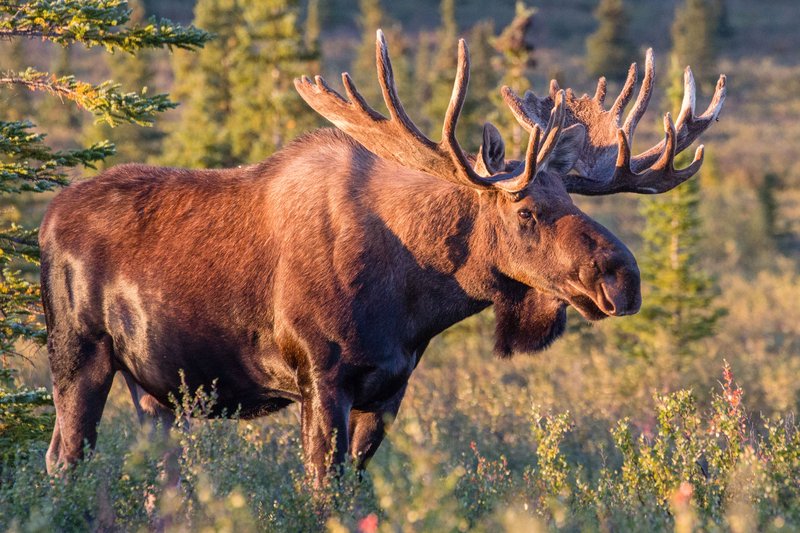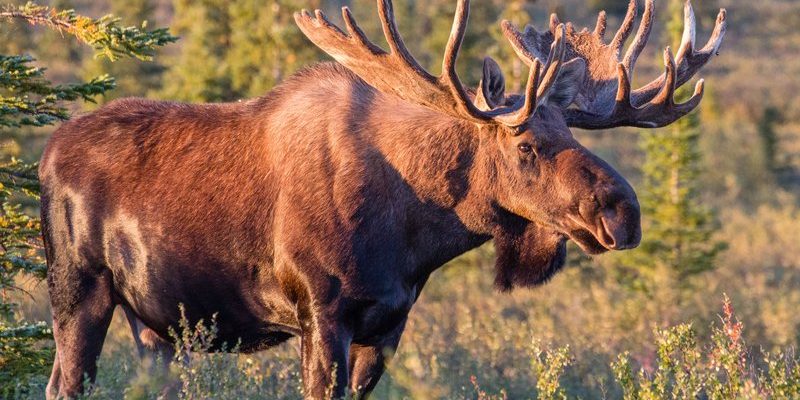
Moose, the largest members of the deer family, have a unique approach to motherhood. Raising calves in the wild isn’t just about feeding them and keeping them safe; it involves a series of lessons that prepare them for life in the vast wilderness. Let’s dig into these incredible creatures and explore how they nurture their young.
Moose Calves: The Beginning of Life
When moose cows give birth, it usually happens in late spring. This timing isn’t random; the warmer weather and abundant food during this season mean that the calves have a better chance of survival. A typical moose calf weighs around 30 pounds at birth and stands about three feet tall. Imagine that—about the size of a small dog!
After giving birth, the mother moose will typically stay in a secluded area for a couple of days. This allows the calf to get used to its new world and bond with its mother. During this period, the cow is extremely protective and won’t stray far from her newborn. She relies on her instincts to keep both herself and her calf safe from predators. Honestly, it’s a bit like a new mother making sure her baby isn’t disturbed while they’re both trying to find their footing.
Once the calf is strong enough, it will start to follow its mother into the wild, where the real adventure begins.
Teaching Survival Skills
As the calves grow, their mothers take on the crucial job of teaching them essential survival skills. This includes learning what to eat and how to find it. Moose are herbivores, munching on leaves, twigs, and aquatic plants. A mother moose will often lead her calves to rich feeding grounds, showing them how to forage.
One important lesson they learn is to recognize safe food. Just like kids might be taught not to eat certain things, moose calves learn which plants are good to eat and which ones to avoid. This is vital for their health and survival. You might be wondering how they know; it’s all about observation and imitation. If the cow eats something, chances are, her calf will too.
Not only do they learn about food, but they also pick up on other behaviors, like how to communicate with each other using grunts and bellows. This language is key in the wild for alerting each other to danger.
Mother’s Protection: Keeping Calves Safe
Moose mothers are fiercely protective of their young. If they sense danger, they can be quite aggressive. A cow will do everything she can to keep her calf safe from predators like wolves and bears. You wouldn’t want to mess with a mother moose; they’re big, strong, and have a serious protective instinct, much like any mom you know.
During the first few months of life, the calves are particularly vulnerable, so the cow keeps them close, often staying within sight of water. Water offers a refuge, as moose are excellent swimmers. If a threat approaches, a cow might lead her calf to deeper waters where they can escape potential dangers.
Additionally, the cow will often find a hiding spot in dense shrubbery or tall grass where her calf can stay hidden while she grazes nearby. It’s a smart strategy that not only keeps her little one safe but allows her to keep a keen eye out for threats.
Social Structure and Playtime
As moose calves grow older, they become more social. They start to play, running around and practicing their jumping and running skills. This playtime is crucial because it helps develop their muscles and coordination, which are essential for evading predators as they mature.
You might find it amusing to see a young moose hopping around, almost like a puppy. They engage in playful behaviors with their siblings, such as mock-fighting and chasing each other. These activities not only promote physical fitness but also strengthen social bonds.
Plus, it’s during these playful moments that they also learn social cues, which will help them navigate interactions with other moose as they grow up. Just like human kids, moose calves learn a lot through play.
Independence: Transition to Adulthood
By the time moose calves reach about six months of age, they start becoming more independent. This is when the mother begins to lessen her supervision. She still stays nearby, but the calves often venture off on their own to explore the world. It’s a bit bittersweet; the mother knows it’s time for them to start figuring things out alone.
Around one year old, calves are usually weaned. This means they’ve transitioned from their mother’s milk to foraging for solid food. They’ll continue to rely on their mother for protection and guidance for several more months, but soon they’ll be ready to take on the wilderness themselves.
By the time they reach about two years old, female moose are often ready to mate and potentially start their journey as mothers themselves. This cycle of life highlights the incredible adaptability and resilience of the species.
In the wild, moose raising their young is a beautiful, intricate process. From the moment they’re born, calves are guided through a series of essential lessons in survival, social behavior, and independence. Like all parents, moose mothers give their offspring the tools they need to thrive in the wild.
It’s a testament to the wonders of nature—how creatures adapt and nurture the next generation. When you think about it, moose parenting is really about love, protection, and the journey toward independence. So, the next time you see a moose, take a moment to appreciate the incredible bond between mother and calf; it’s a wild story of growth and survival that’s just waiting to be appreciated.

